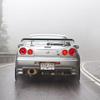July Photo Thread
Announcements
-
Similar Content
-
Latest Posts
-
That is an unpleasant surprise to come back to, all the best. In your pic it has race numbers, were they on it and is it a road or race car? Other than colour, anything else unique about it?
-
😬 This is still for sale. And it's had zero price updates. https://www.carsales.com.au/cars/details/2002-holden-commodore-s-vx-ii-manual/SSE-AD-12765398
-
The AR-X Four is a "crossover" type model with enhanced offroad ability over the normal models. I'd be basing my decision on that to be honest. The AR-X has slightly worse fuel consumption as it's about 40kg heavier, and has a bit higher ground clearance.
-
Yep, I agree. I can't stand modern cars and their dashes that are all screens and you can't dim the bastards dark enough! I'm constantly being blinded in a modern car!
-
Yep. I love the inside of my E39. Not sporty by any stretch but the epitome of "only what you need".
-








Recommended Posts
Create an account or sign in to comment
You need to be a member in order to leave a comment
Create an account
Sign up for a new account in our community. It's easy!
Register a new accountSign in
Already have an account? Sign in here.
Sign In Now